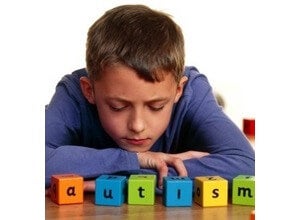
Autism is normally diagnosed in children at around 18 months to 2 years of age, when parents see odd behavior and take their child to the doctor. Unfortunately, by the time outward symptoms are apparent much of the faulty brain architecture underlying autism has already taken form. Corrective therapies that last a lifetime are all too often powerless to reverse the damage that occurred in those first two years. But a new study offers hope that autism could be detected in children as young as 6 months old and give treatments that much more of a head start.
Researchers at University of North Carolina’s Institute for Developmental Disabilities imaged the brains of 92 children who were at high risk for autism. Scans were performed when the children were 6 months, 1-year, and 2-years old. At 2 years, the age when children are typically diagnosed, 30 percent of the children were found to have autism. The researchers then compared the brain images of the autistic children with the others. They saw differences in the brain’s white matter, the axon-laden pathways that transmit electrical signals to distant parts of the brain. Of the 15 pathways analyzed, 12 were significantly different between autistic and non-autistic children.

Other researchers have performed an analogous experiment in which they monitored the growing infants’ behaviors in an attempt to identify tell-tale behavioral abnormalities, but as far as the UNC researchers are aware, they are the first to uncover brain imaging differences at such an early age. The study, which was published recently in the American Journal of Psychiatry, extends other brain imaging research that has shown that toddlers 2- and 3-years old have larger than normal brains and post-mortem measurements that show autistic adults have larger brains as well.
Autism is a complex disorder the biological cause of which continues to elude scientists. It’s main symptoms include impaired social interaction and restricted and repetitive body movements. We know it has a genetic component because two identical twins are more likely to share the disease than two fraternal twins. Although autism affects one in 110 children on average, children born into families with a history of autism have an almost one in five chance of being autistic. The children in the current study were considered high risk because they had older siblings who’d already been diagnosed with the disorder.
Treating autism, understandably, is a work in progress. Behavioral strategies such as placing the child in visually stimulating surroundings, speech-language therapy, physical therapy, medications and other therapies are used but no silver bullet has been found as yet. What is well established, however, is that beginning treatment early and intensively greatly improves the child’s chances of making progress. The promise of the current study is the possibility of beginning therapy long before outward behavioral symptoms begin to manifest themselves.
Not all are as hopeful. An issue being raised by some is the subject-to-subject variability in the study’s brain images. They question whether or not the differences in white matter between autistic and normal children will be robust enough in future diagnoses to overcome that variability. The study’s lead author, postdoctoral fellow Jason J. Wolff, acknowledged that the study is “preliminary” in a UNC news report. He also called it a “great first step” in uncovering a new indicator that could be used to diagnose even younger children.
Whether or not differences in white matter tracts will prove a useful to future diagnoses, it stands on its own as a discovery of the autistic brain. If clinicians don’t find the study useful, researchers surely will.
[image credits: UNC, Topnews]
image 1: brain scan
image 2: autism



